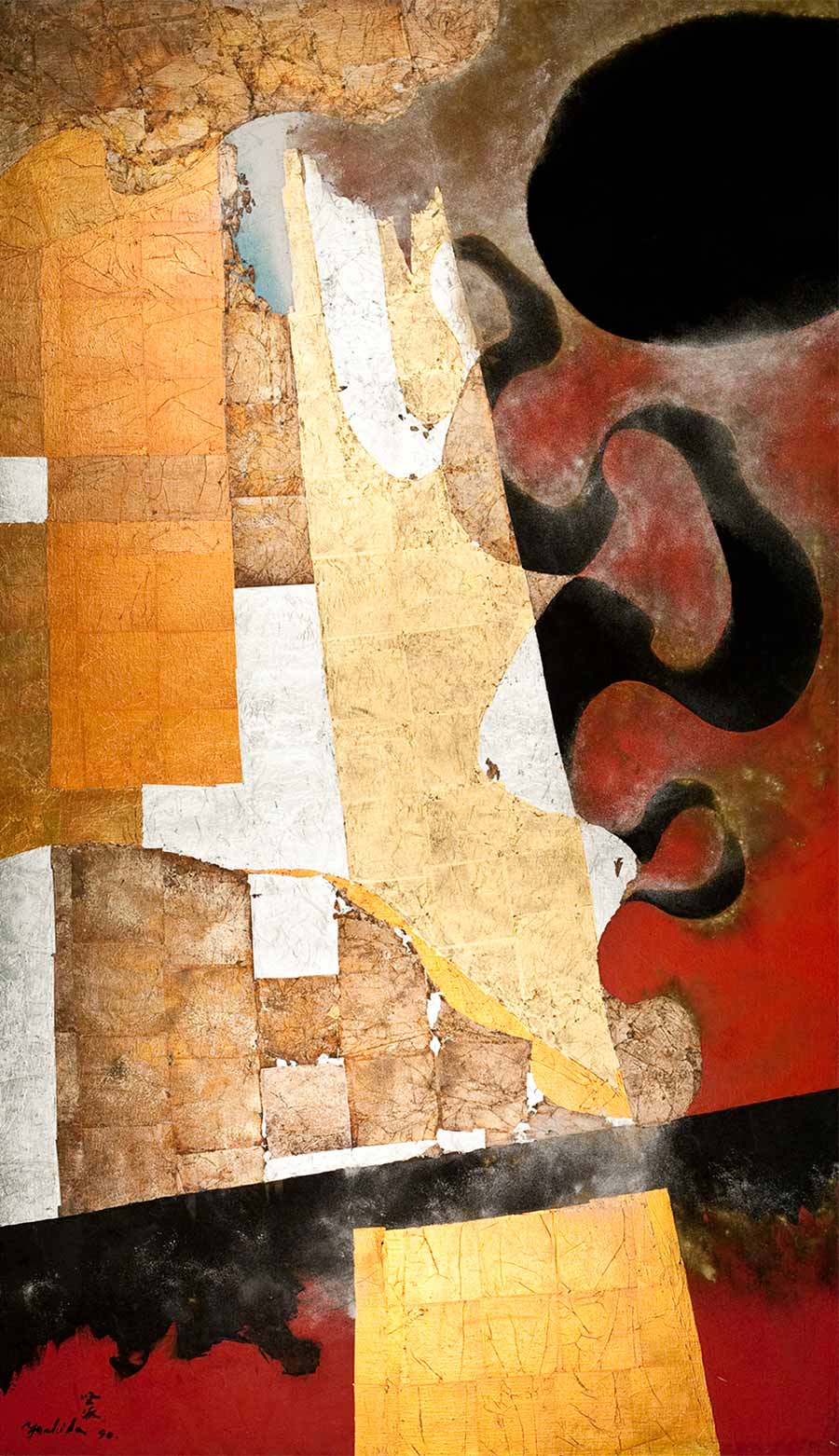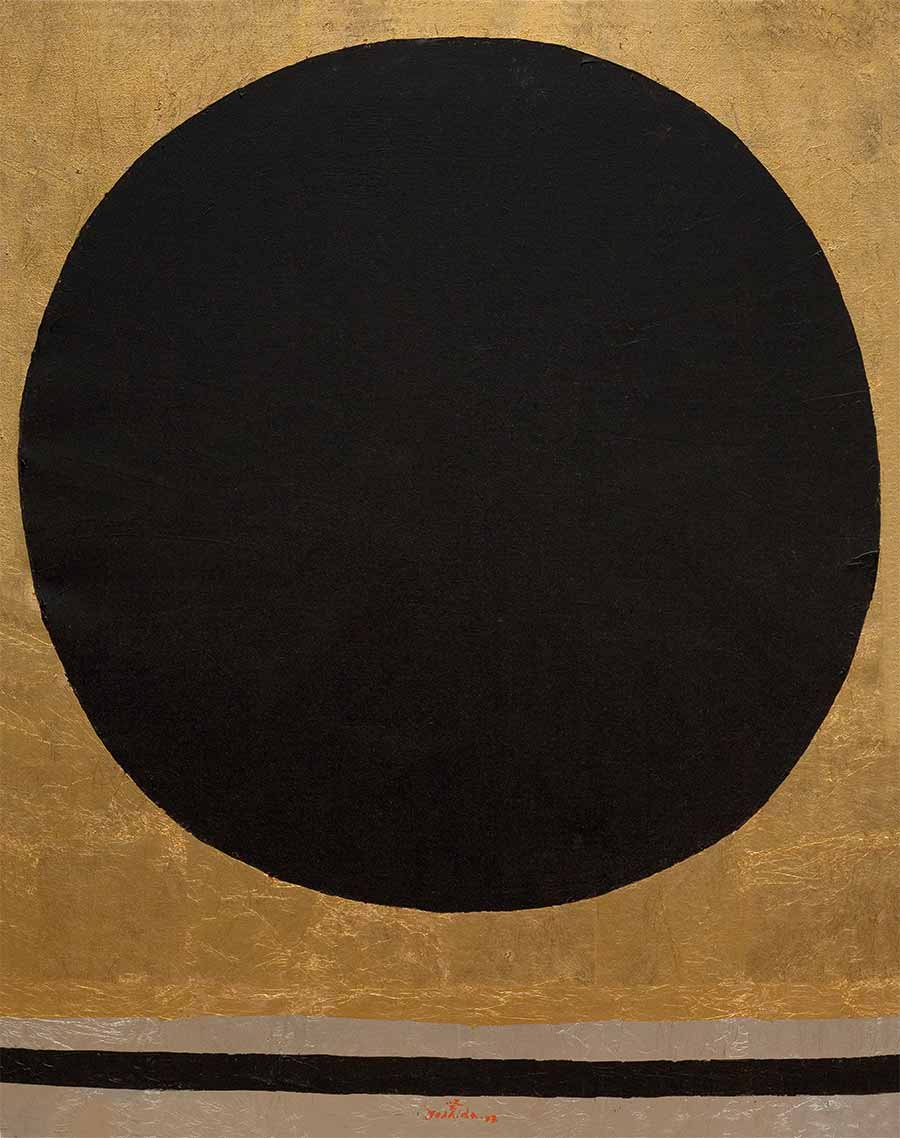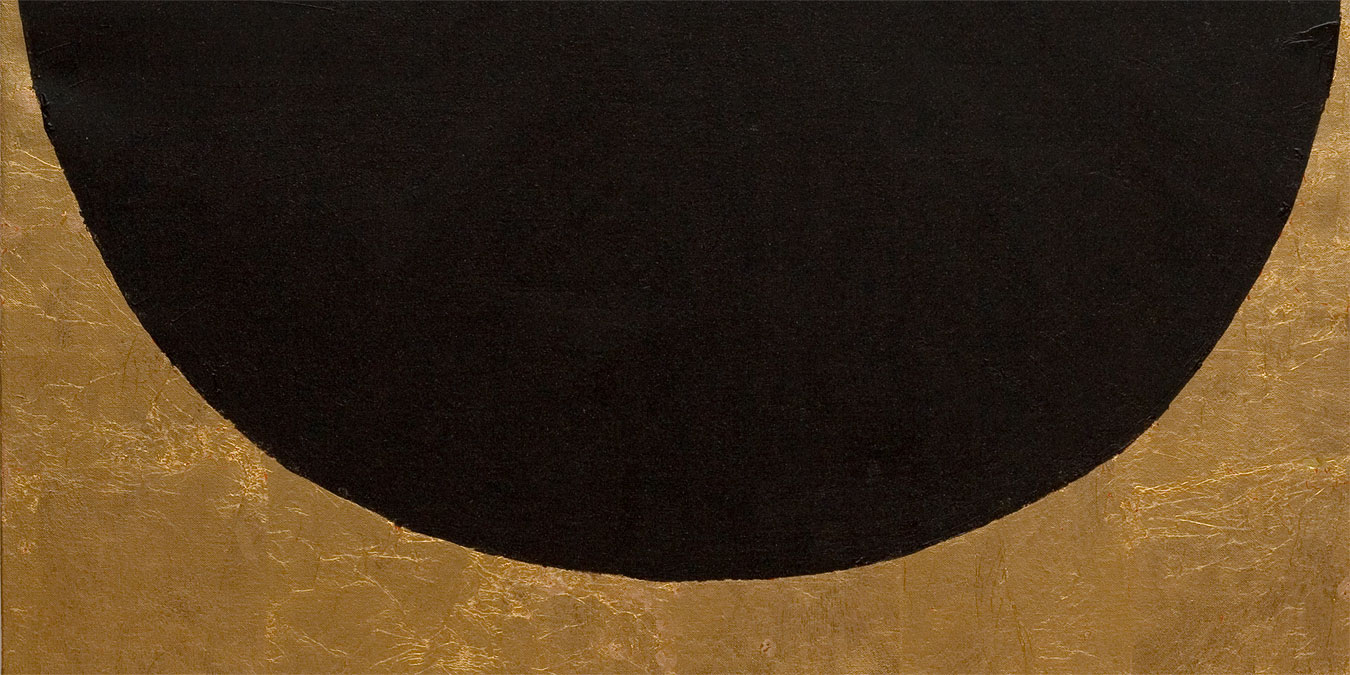Kenji Yoshida: INFINITE LIGHT

196 x 114 cm.

Oil and metal on canvas, 81 x 65 cm.
October Gallery will present an exhibition of works by the late Kenji Yoshida (1924 - 2009).
Infinite Light will focus primarily on Yoshida’s later paintings in which gold leaf and other metallic overlays are applied to contrasting fields of bright colour and black ground, creating moving compositions that express the artist’s oft-repeated statement, that ‘Life brightens when peace happens.’ In this magnificent, elliptical language of coloured forms surrounded by silver and gold leaf, Yoshida invites the viewer to consider the fundamental forces of life, and meditate upon that essential unity that binds us all together and dwells in the heart of humanity. For Yoshida, Light represented the ineffable quality of Life that showered down on earth from the infinite depths of space. It was our duty, he believed, to nurture that life-giving force, by reflecting it endlessly amongst ourselves, so that it travelled onwards forever.
Born in 1924, in Ikeda City (part of present-day Osaka), Yoshida first studied art under Hayashi Kiyoshi Sensei before his path of artistic development was unavoidably interrupted by war. Selected for training as a kamikaze pilot, Yoshida was extremely lucky to survive his teens - though the majority of his friends were not so fortunate. It was under the weight of many such memories, and in a post-war climate of crushing defeat, that Yoshida returned to his art, devoting himself to a sustained exploration of those life-affirming forces that he had seen so tragically extinguished around him. From that point onwards the majority of Yoshida’s work has carried the single, most telling of all titles, Sei-Mei - La Vie - Life. Yet, however much agency Yoshida’s poignant personal experiences might lend to his message of Peace, October Gallery’s exhibition seeks to re-examine his work in an art historical context, considering it, in its own right, as the work of a supreme master.
In 1964, Yoshida left Japan permanently, following in the footsteps of the legendary Tsuguharu Fujita. By moving to the cosmopolitan capital of Paris, the acknowledged centre of international Modernism, Yoshida was expressing his hope that some reconciliation of East and West could be materially enacted through painting. Indeed, this surprising move beyond the protective pale of Japanese influences brought Yoshida’s work into dialogue with the great movements of the time. He was confronted by the heady shock of the Abstract Expressionists, and in particular Rothko and Motherwell, who both employ similarly abstract forms in striving for that transcendent spirituality that so characterises Yoshida’s art. Yet, rather than entering the slipstream of his contemporaries, Yoshida’s decision to make his mark on the world from a small studio in Paris allowed him the freedom to tread a path of independent innovation: the results of his choice are uncompromisingly original, standing quite alone in the history of art during the forty five years he lived and worked in Europe.
In 1993, the individual qualities of Yoshida’s work were recognised when he was honoured as the first living artist ever to be given a solo exhibition at the Japanese Galleries of the British Museum. His final exhibition, in 2008, was in the main hall of UNESCO in the centre of Paris – the city that reciprocated his choice in making it his home by adopting him as one of her own artists and providing him with a studio for life. Two acclaimed films have been made about this extraordinary artist. Kenji Yoshida: Artist of the Soul, directed by Ishmael Annobil, was given an unprecedented screening at UNESCO in October 2008, at Yoshida’s testimonial exhibition, Vie Et Paix. In 2010, NHK, Japan’s National Broadcasting Network, created a special documentary entitled Sei-Mei (Life-Force) about Kenji Yoshida’s life, his work and his unwavering insistence on the single and simple message of Peace. This film was commissioned and broadcast to coincide with the 65th anniversary of the bombing of Hiroshima and Nagasaki. Finally, Yoshida’s message had returned home.




,-2004,-Oil-and-Metal-on-Canvas,-114-x-390-cm.-Photo-by-Jonathan-Greet.-Image-courtesy-of-October-Gallery,-London.jpg)

,-2004,-Oil-and-Metal-on-Canvas,-114-x-390-cm.-Photo-by-Jonathan-Greet.-Image-courtesy-of-October-Gallery,-London.jpg)

